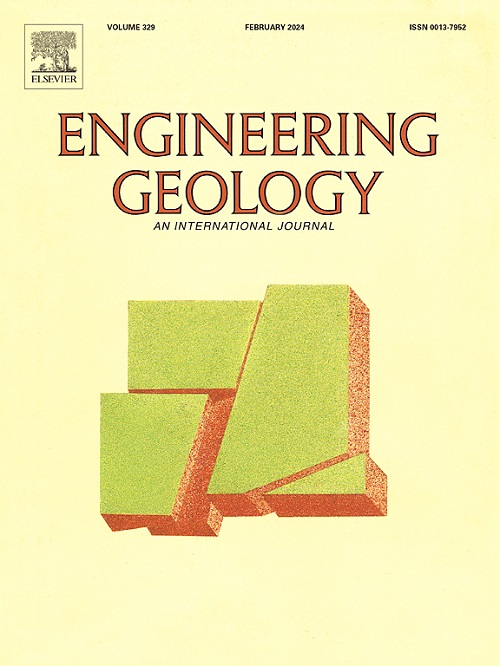Impact of engineering geological environment on sensor-enabled piezoelectric geocable (SPGC) monitoring performance—Accelerated aging test
IF 6.9
1区 工程技术
Q1 ENGINEERING, GEOLOGICAL
引用次数: 0
Abstract
Geotechnical deformation monitoring is of great significance for characterizing and understanding the evolution law of geological hazards. In recent years, distributed Sensor-enabled piezoelectric geocable (SPGC) have shown great application potential due to their advantages of wide strain measurement, high sensitivity, and low cost. However, as a distributed monitoring method for the entire lifecycle, SPGC faces significant challenges in terms of durability and data stability. To this end, accelerated aging tests were performed on the SPGC, including acid–base corrosion, ultraviolet radiation, and thermal oxidation, to explore the mechanical and electrical properties of the SPGC. The test results show that the daily static normalized impedance continues to increase with increasing age and tends to be stable after reaching the threshold, showing an exponential function relationship. After aging, the physical and mechanical properties of the SPGC exhibit different degrees of loss, showing a rapid declining trend initially, which gradually becomes slow; the percentage loss is more than 80 %, which satisfies the requirements of more than 50 % of the standard. The impedance–strain curve, normalized impedance threshold, and characteristic point voltage changed the most in the first 14 d. Among these, thermal oxidation and ultraviolet radiation had the greatest influence on the SPGC monitoring performance. Considering the applications of SPGC in different monitoring environments and periods, a normalized impedance compensation model (initial 6 % strain) is proposed in this study considering the engineering geological environment and time. The maximum average error was 9.28 %. The research findings confirm the feasibility of applying SPGC for monitoring geotechnical deformations throughout the entire lifecycle of engineering projects. It highlights the importance of effective data calibration and processing during the monitoring process to improve both the accuracy of the measurements and the reliability of the results.
求助全文
约1分钟内获得全文
求助全文
来源期刊

Engineering Geology
地学-地球科学综合
CiteScore
13.70
自引率
12.20%
发文量
327
审稿时长
5.6 months
期刊介绍:
Engineering Geology, an international interdisciplinary journal, serves as a bridge between earth sciences and engineering, focusing on geological and geotechnical engineering. It welcomes studies with relevance to engineering, environmental concerns, and safety, catering to engineering geologists with backgrounds in geology or civil/mining engineering. Topics include applied geomorphology, structural geology, geophysics, geochemistry, environmental geology, hydrogeology, land use planning, natural hazards, remote sensing, soil and rock mechanics, and applied geotechnical engineering. The journal provides a platform for research at the intersection of geology and engineering disciplines.
 求助内容:
求助内容: 应助结果提醒方式:
应助结果提醒方式:


